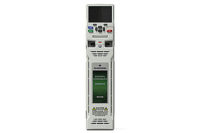Every day, fastener suppliers preach an important message to manufacturers: Fasteners that hold together a product are critical to its functionality, design, durability and end-user satisfaction. Sometimes, this advice hits home.
Nearly three years ago, for example, Embru-Werke AG (EW) followed the lead of Bossard AG to solve a problem related to its best-selling school chair. EW is a long-established Swiss manufacturer of school furniture that produces approximately 30,000 school chairs annually. Back in 2014, about 50,000 of one specific model of chair (with four feet and a center support bottom) were being used in nearly 40 percent of classrooms in Switzerland.
“Rubber caps on some chairs had been coming off, which made us nervous [because] linoleum floors are difficult and expensive to repair or replace,” explains Markus Simitz,
purchasing manager at EW. “An internal analysis indicated that, under sustained force, such as when students lean back in their chairs, the caps came off countersunk screws.”
Simitz immediately contacted Bossard, and one of its engineers performed lab tests over a three-week period to study the screws’ installation and performance. He concluded that screw dimensions prevented assemblers from snugly fitting the rubber caps over installed screws.
In addition, screw threads often became stripped over time, resulting in the entire base of the chair having to be replaced.
“We just wanted to replace the screws, not parts of the chairs or whole chairs, which would have cost an enormous amount of money,” continues Simitz. “The challenge was to ensure backward compatibility. [In other words], the new screws had to fit the chairs already delivered, [specifically] their caps and 4-millimeter screw holes.”
Working closely with EW’s production manager and design engineer, Bossard developed a half-dozen new screw prototypes that did not require changing the chair’s design. EW’s preferred fastener of the six was a thread-forming screw with 4.5-millimeter-diameter threads, a Torx drive and underlying round flange. The Torx drive prevents damage to the screw head at high torques, while the round flange securely holds together multiple chair parts.
At this point, a Bossard engineer extensively tested the fastener for reliability at one of the company’s ISO/IEC-accredited labs. Using cutting-edge instruments, he determined that the best installation tool is a high-precision computerized screwdriver.
“[We learned] that force is just as important as the screws themselves,” says Simitz. “The screws can be too loose or overtightened if there are more than minimal torque differences. Now, we have peace of mind. Complaints have virtually ceased, and when one is received, we know what to do.”
Bossard operates 10 accredited test labs in Europe, America and Asia. There, engineers perform a wide range of tests, including dynamic measurements of thread-forming, stripping and breaking torque; relaxation measurements on fastened joints; tensile and proof load; drive and torsional strength; pull-out on assembled fastening elements; optimum tightening torque; and friction coefficient.
Founded in 1831, Bossard makes several types of thread-forming, thread-cutting and self-tapping screws in stainless steel and aluminum. Other types of fasteners include rivets, pins (dowel, taper, spiral), and those for thermoplastic and wood.
For more information on thread-forming and other fasteners, call 817-378-9955 or visit www.bossard.com.




